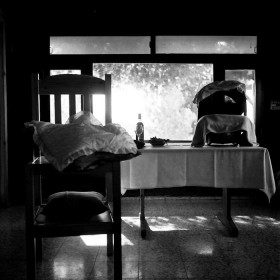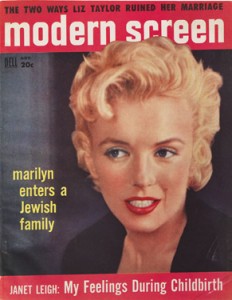
Before the circumcision ceremony: the godfather’s chair and the infant carrier with Yair © photo: Birgit Glatzel
Naomi converted to Judaism six years ago. Shortly afterwards she became pregnant, went to live with her boyfriend Avishay in Tel Aviv, and gave birth there to a son, Yair, who was circumcised as Jewish law demands. In the meantime the couple has moved to Berlin and separated. Naomi recently showed me the photos she took at the ceremony and we talked about her thoughts on ritual circumcision, then and now.
Mirjam: What was your very first thought when you heard you were expecting a son?
Naomi: I was delighted. For Avishay and I, it was also clear from the get-go that we’d have him circumcised. But, to be honest, we neither gave the matter much thought nor prepared for it in any way. It is Jewish tradition to → continue reading
Why a particular subject captures the interest of the public at a given time is not always immediately apparent. Conversion, for instance, has become the topic of conferences, lectures and exhibits in German-speaking Europe without any notable change in its social significance nor religious practice.

Picture in the current special exhibition “The Whole Truth” accompanying the question: Jew or non-Jew? Marilyn Monroe on the cover of the Modern Screen Magazine, November 1956
© Jewish Museum Berlin, photo: Jens Ziehe
The number of converts to Judaism is invariably small. According to the data collected by the Zentralwohlfahrtsstelle der Juden in Deutschland, on average 64 conversions are carried out yearly in the various German-Jewish communities, and since the year 2000, the number has remained fairly stable. Nor has the size of the Jewish communities varied much. For over a decade, the number of members has stabilized at around 105.000. In relation to the size of the community, the total number of converts since 1990, 1.366, makes up under one percent of the Jewish community. The number of Jews leaving the communities is slightly higher, around one hundred a year, yet the number is not particularly meaningful, because it includes people who leave for all sorts of reasons, including financial. By all accounts, today’s Jewish converts are a minute and exotic minority.
Yet the topic is currently being discussed with much enthusiasm. → continue reading

